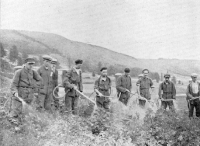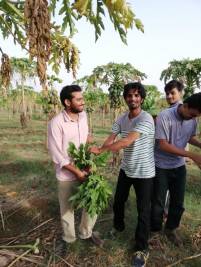Transition
A World at a Crossroads
Walk into any supermarket today and you’ll see abundance: shiny apples, perfectly shaped tomatoes, and endless rows of packaged goods. But behind this polished façade lies a troubling reality. Our food system, driven by speed and efficiency, has leaned heavily on chemical fertilizers, pesticides, and mono-cultures. The result? Food that looks good but often lacks flavor, nutrients, and—most importantly—sustainability.
The question is no longer if we need to change, but how fast we can do it.
The Hidden Costs of “Efficiency”
For decades, fertilizers and pesticides were hailed as miracles of modern agriculture. They promised higher yields and faster growth. Yet the bill has come due:
- Taste and nutrition sacrificed: Crops grown under chemical regimes often lose their natural richness.
- Soil exhaustion: Fertile land is stripped of life, leaving behind barren ground.
- Fragile ecosystems: Mono-cultures invite pests and diseases, forcing farmers into a cycle of chemical dependency.
- Biodiversity collapse: The delicate balance of nature is disrupted, with ripple effects across entire ecosystems.
It’s a system that feeds us today but undermines our ability to feed ourselves tomorrow.
Organic Farming: Back to the Roots 🌾
Organic agriculture flips the script. Instead of fighting against nature, it works with it. The focus shifts from sheer volume to quality—nutritious food grown in harmony with the environment.
The toolkit of organic farmers includes:
- Compost and organic fertilizers that nourish the soil.
- Green manures, like legumes, that naturally fix nitrogen.
- Minimal tillage to protect soil structure and microbial life.
- Humus-building practices that strengthen plants and ecosystems.
The payoff? Healthy soils that capture carbon, support biodiversity, and produce food rich in nutrients and flavor.
Farming as a Circular System
Think of organic farming as a closed loop. Crop residues feed the soil, animal manure enriches it, and nutrients cycle naturally. Nothing is wasted. This circularity not only sustains fertility but also helps lock carbon into the ground—a powerful ally in the fight against climate change.
Can Big Farms Go Green?
Critics often argue that organic farming is too small-scale to feed the world. But sustainability doesn’t have to stop at the farm gate.
Large-scale agriculture can embrace organic principles if it’s managed responsibly:
- Integrating crops and livestock so manure is recycled.
- Prioritizing food for people, not just animal feed.
- Actively protecting biodiversity and soil health.
In countries where land is scarce, the challenge is to produce not just calories but nutrients—food that truly sustains human health.
The Road Ahead: Farming in Harmony with Nature
Agriculture is at a turning point. Climate change, soil degradation, and public health concerns demand a radical rethink of how we grow food. The future lies in:
- Reducing reliance on fossil fuels.
- Harnessing natural processes instead of suppressing them.
- Investing in long-term resilience rather than short-term profit.
Conclusion: A Practical Dream
Organic, sustainable farming isn’t a utopia—it’s a necessity. It offers a path to:
- Nutritious, flavorful food.
- A planet in balance with nature.
- A resilient food system ready for the challenges ahead.
The choice is clear: farming that depletes or farming that sustains. One feeds us for a season; the other feeds us for generations.





